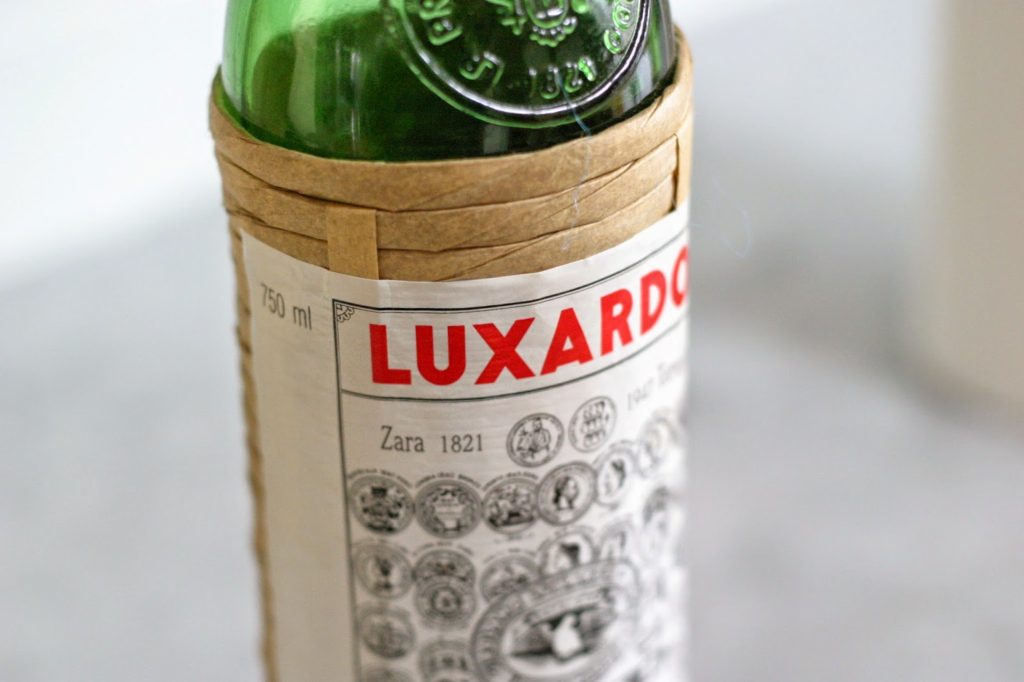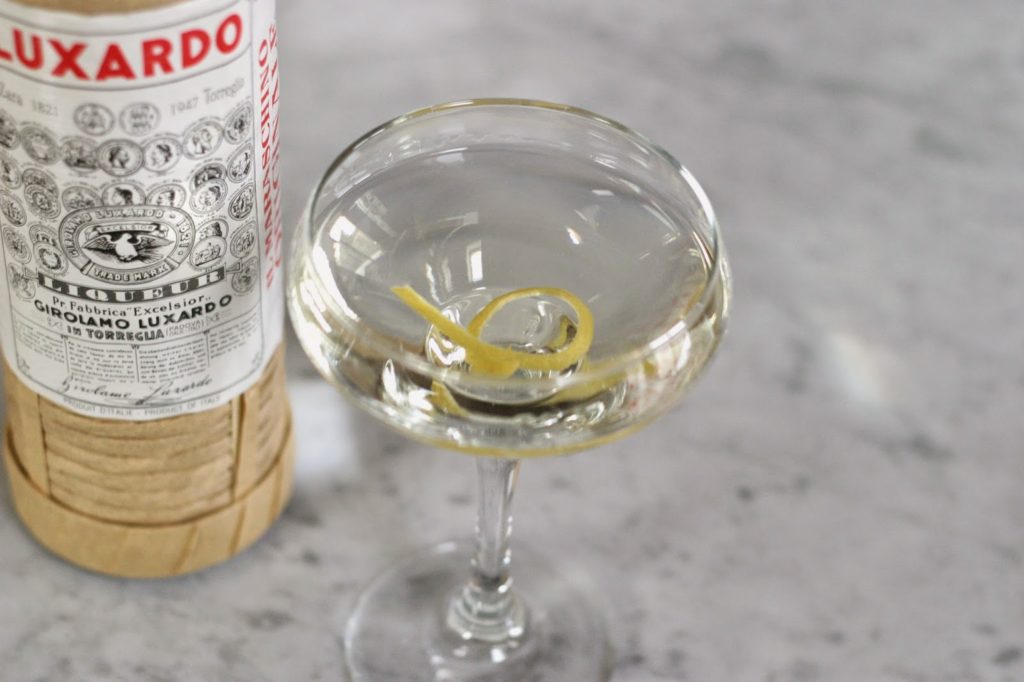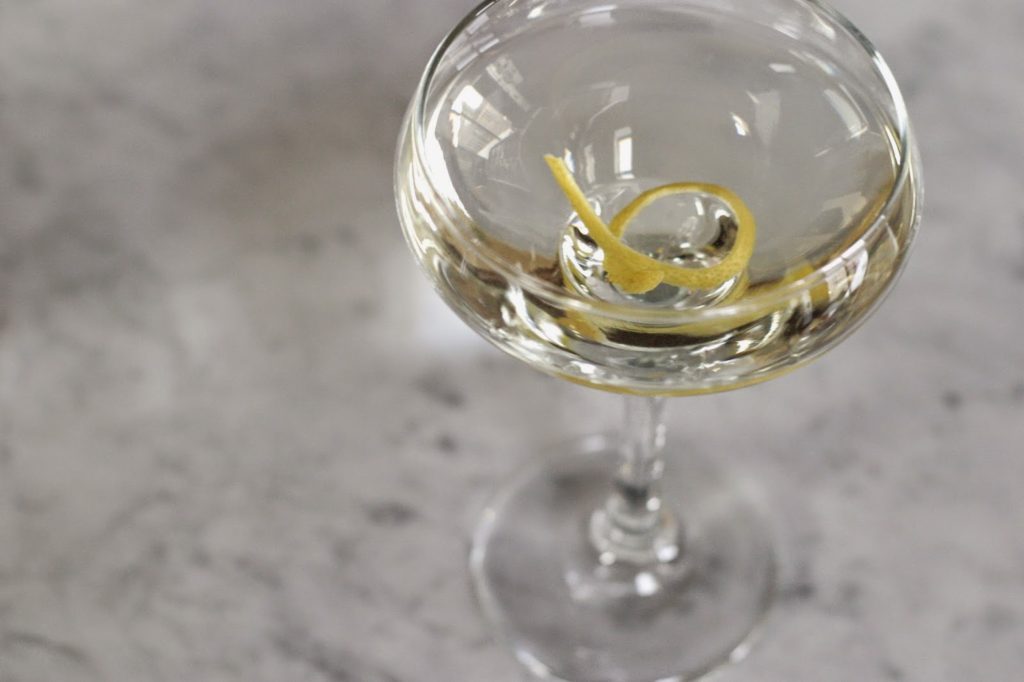St. Germain was the first splurge I ever made for my bar; Luxardo was the second. It took me a while to buy it because it was pricey for me at the time, and I didn’t think it was very versatile. While St. Germain popped up in bunches of cocktails and tasted amazing mixed with just about anything, I really only wanted the bottle of Luxardo to make one of my new favorite cocktails, the Aviation. I didn’t think I’d be using it in much else. But boy, was I wrong. Luxardo appears in tons of classic cocktails. So many that it’s one of the bottles Roger Kamholz picked for The Kitchn’s 9-Bottle Bar.
Luxardo hails from the town of Zara on the Dalmatian Coast, once part of the Venetian Empire (now called Zadar and located in Croatia). Girolamo Luxardo and his wife Maria Canevari moved there from Genova in 1817 when Girolamo was appointed consular representative for the Kingdom of Sardinia (the predecessor of Italy today). Maria occupied herself by making liqueurs, and set out to perfect a recipe for a traditional Dalmatian rosolio maraschino. The result was so impressive and well-liked that Girolamo founded a distillery in 1821 to produce Luxardo.
When Zara was ceded to Yugoslavia at the end of World War II, most of its Italian population was forced to leave. Many were killed. Only a single member of the fourth generation of Luxardos survived, Giorgio Luxardo. He rebuilt the distillery in Torreglia, Italy, where it remains today. The company is still family run, and owns the largest cherry orchard in Europe.
Luxardo is a liqueur made from sour marasca cherries. Ripe cherries are combined with pits, leaves, and stems as well as honey and other secret ingredients to infuse in larchwood containers. The liqueur is then distilled in copper stills and aged for two years in Finnish ash wood vats before being diluted and sweetened. On the Luxardo label, you can see the seals of the many awards it has earned, as well as the signature of Girolamo Luxardo. The bottles are easily recognized by their straw sleeves, which protect them during shipping.
Luxardo is sweet, almost sickeningly so on its own, but it’s also complex. It’s not the in-your-face cherry flavor your might expect; piney and herbal notes give it a lot of depth. Its distinct flavor makes it difficult to miss in a drink, and it can easily overpower other ingredients, but in the right amounts it makes an amazing cocktail.
Luxardo Maraschino Liqueur
Price: $32
Alcohol content: 32%
Popular cocktails: Martinez, Turf Cocktail, Aviation, Red Hook, Last Word, Hemingway Daiquiri
To introduce this delicious an unusual spirit, I chose the Turf Cocktail. The addition of absinthe, two kinds of bitters, and the Luxardo gives it a strong herbal quality. It’s a drink with many layers. For this reason, it may have not been the best choice to really showcase Luxardo’s flavor, but it does show how nicely it can blend with other ingredients when used right.
History: A “turf club” was where well-to-do gentlemen would go to bet on horse racing around the turn of the century. As such, a number of different Turf Cocktails popped up from the various clubs, and three recipes have persisted. This is the best-known, first published in Harry Johnson’s 1882 Bartender’s Manual.
Turf Cocktail
2 oz. gin
3/4 oz. dry vermouth
1/4 oz. maraschino liqueur
1 dash absinthe (I used Herbsaint)*
1 dash orange bitters
Combine ingredients in a mixing glass and fill with ice. Stir until chilled. Strain into a cocktail glass or coupe. Garnish with a lemon twist.
*Note: Be careful with your “dash” of absinthe. While bitters are made to be dispensed in dashes, it can be a trickier business with big bottles, and too much anise flavor will ruin this cocktail. As discussed in this article, also from The Kitchn, a dash is about 1/5 of a teaspoon.
Recipe from Imbibe.








